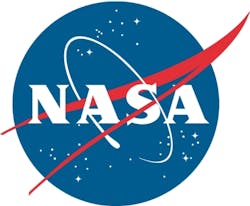NASA officials seek avionics, boosters, more for Space Launch System advanced heavy-lift launch vehicle
WASHINGTON, 23 Sept. 2011. Officials have released the acquisition overview for NASA’s new, advanced, and much-anticipated heavy-lift launch vehicle, the Space Launch System (SLS). SLS is intended to take the agency's astronauts farther into space than they’ve ever been, as well as also influence the availability of high-quality jobs in the U.S. and the future of America's human space exploration. The SLS will carry the Orion Multi-Purpose Crew Vehicle and its crew, cargo, equipment, and science experiments to an asteroid by the middle of the next decade, and then on to Mars.
Initial planning is for the following:
- Boosters – utilization of the five segment Ares First Stage Boosters under the existing contract for the initial flights, the first of which is targeted for the end of 2017.
- Advanced Boosters – to be utilized for missions beyond the initial flights -The Agency will not specify solutions (i.e., liquid or solid propulsion may be proposed), but will instead solicit solutions to meet performance and interface requirements.
- Stages – utilization of the existing Ares Upper Stage contract for the integrated SLS Core Stage and Upper Stage for the initial SLS capability through 2021.
- Avionics - utilization of the existing Ares Instrument Unit Avionics contract for the initial SLS capability through 2021.
- Engines – for the Core and Upper Stages -Core Stage Engine - utilization of the existing inventory of RS-25Ds for the initial SLS capability. -Upper Stage Engine – utilization of the existing Ares J-2X development contract.
- Spacecraft and Payload Adaptors, and Payload Fairing– initial in-house design efforts followed by competitive acquisitions beginning in the 2013 timeframe.
- Advanced development - a combination of in-house tasks and competitive opportunities for industry and academia beginning in 2012.Systems Engineering and Integration – NASA led at least through SLS critical design review (CDR) in 2014.
NASA officials indicate that the new heavy-lift rocket is key to the 2010 NASA Authorization Act, as is the Orion crew capsule under development, support for commercial travel to low Earth orbit, and activities on the International Space Station until at least 2020.
The booster is expected to become America's most powerful since the Saturn V rocket that carried Apollo astronauts to the moon, providing a sustainable means of reaching beyond the current range of space exploration.
The architecture employs an evolvable development approach, enabling NASA to address high-cost development activities early in the program, while taking advantage of increased buying power before inflation erodes the available funding in a fixed budget, says a spokesperson.
To view the SLS Acquisition Overview, visit: http://prod.nais.nasa.gov/cgi-bin/eps/synopsis.cgi?acqid=148591
More details will be forthcoming, such as in presentations at the SLS Industry Day on September 29, 2011, at the Davidson Center, in Huntsville, Ala. Registration information is offered online http://prod.nais.nasa.gov/cgi-bin/eps/synopsis.cgi?acqid=148572. Questions and comments can be submitted to Earl Pendley, 256-544-2949 or [email protected].
